
San Bernardino County, California
Birding Around Las Vegas, Favorite Places Far Away

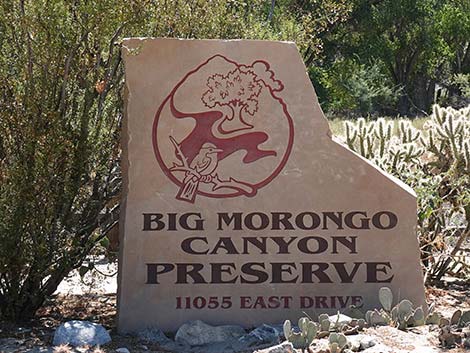 Big Morongo Canyon Preserve entrance sign (view SE) |
Overview The Big Morongo Canyon Preserve, a riparian area in the desert mountains north of Palm Springs, straddles the transition zone between the Mojave (higher elevation) and Sonoran (lower elevation) deserts. Springs feed a stream that waters lush vegetation (including trees, palms, brushy thickets) and small ponds in the nature preserve, plus open grassy fields in the adjacent community park. Combined, these well-vegetated areas amid arid desert slopes provide habitat for a remarkable density and variety of resident, migrant, and vagrant species of birds; more than 235 species have been seen here (Bird List). It supports a fair diversity of wildlife too. Water and bird feeders help concentrate the birds where people can see them. Big Morongo Preserve, now part of the Sand to Snow National Monument, is out of the way for most Las Vegas travelers, but stopping here is worth detouring off the interstate or taking the back roads across the desert when traveling between Las Vegas and southern California. Link to map or map edited from BM Canyon Preserve. |
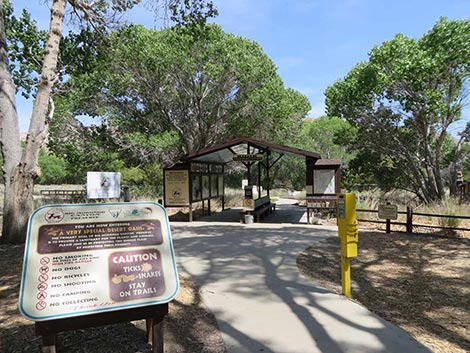 Big Morongo Canyon Preserve entrance kiosk (view SE) |
Description Situated in the Little San Bernardino Mountains north of Palm Springs, the upstream end of the preserve lies in the Mojave Desert, while the downstream end lies in the Colorado Desert. Elevations range from about 600 feet on the canyon floor to over 3,000 feet on the ridges. The Morongo fault, which runs through the canyon, causes water draining from the surrounding mountains to form Big Morongo Creek, which emerges, flows intermittently, and provides water for the riparian and marsh habitats. The lush vegetation, one of the 10 largest cottonwood and willow riparian habitats in California, stands in contrast to the surrounding desert. Five plant communities occur here, including Mojave Riparian Forest (stands of cottonwood, willow, and mesquite trees along the streams and marshes), Fresh-water Marsh (vegetation along streams, ponds, and boggy areas), Desert Wash (dry streambeds where water may flow after rain storms), Creosote Bush Scrub (dry flats and hillsides where plants only get water from the sparse rainfall), and Open Fields (historic grazing areas and disturbed lands that are re-vegetating naturally or are maintained as a community park). |
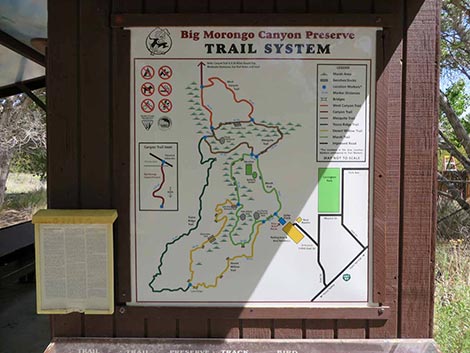 Big Morongo Canyon Preserve trails sign (view SE) |
Several trails, including accessible boardwalks, meander through the preserve. The 0.5-mile (15 minute) Marsh Trail is a wheelchair-accessible boardwalk. If you have time for nothing else, walk the Marsh Trail, which runs along the stream and marshes under a canopy of cottonwood and other trees. A birding paradise during the spring and fall migration, this area supports the second highest density of breeding birds in the United States (1,400 nests per square kilometer). The Bureau of Land Management designated Big Morongo Canyon as an Area of Critical Environmental Concern in recognition of its special values. The land is managed by the BLM to protect rare and endangered wildlife, enhance sensitive riparian areas, promote a variety of plants, provide for scientific research, and offer educational opportunities. The area is further protected as Sand to Snow National Monument. |
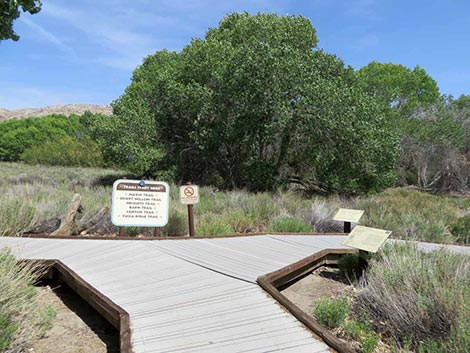 Trails begin behind the kiosk (view SE) |
Location Big Morongo is located on the south side of Highway 62 at the east end of the town of Morongo Valley, California. To get there from Las Vegas, find your way to Palm Springs, then drive north on Highway 62 for about half an hour. Morongo Valley is the first town after you drive up the steep, winding canyon. Watch for signs to the preserve (to the right) on the far (east) end of town. Alternatively, from Las Vegas, drive south on Interstate 15 and take one of the roads across the desert to Twenty-nine Palms, home of the world's largest Marine Corps Base. Pick up Highway 62 and drive west towards Palm Springs. After driving through the town of Yucca Valley, the road runs down a long, steep, straight hill. The preserve is located near the bottom of the steep hill on the left (south) side. Watch for signs and a left-turn lane. |
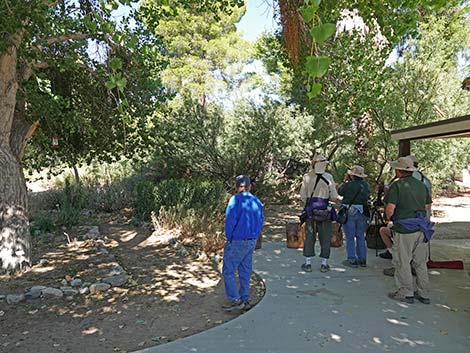 Birders watching bird feeders at the nature center (view N) |
Hours Day-use only: 7:30 to sunset. Visit during the cooler seasons (fall, winter, and spring); the best birding is during the fall and spring migrations. Fees None. Donations are welcomed. |
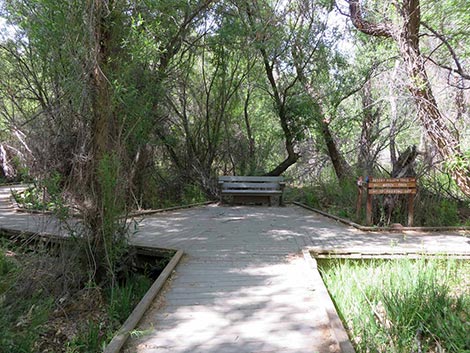 Boardwalk trails with benches and directional signs |
Specialties Big Morongo Canyon Preserve is an internationally recognized birding site. Several rare or unusual species are known to nest here, and many other species are abundant during the spring and fall migration seasons. Big Morongo Canyon Preserve has been designated as an Important Bird Area by the American Bird Conservancy, the American Birding Association, and Watchable Wildlife National Program. The preserve is home to a number of other species, including mammals (desert bighorn sheep, raccoons, bobcats, coyotes, black bear, and kangaroo rats), reptiles (gopher snakes, rosy boas, red diamond rattlesnakes, California kingsnakes, common whiptail lizards, chuckwallas, coast horned lizards, and side-blotched lizards), and amphibians (California tree frogs). |
 Dirt trails |
For More Information The Big Morongo Canyon Preserve website has information on facilities, trails, trail maps, birds, wildlife, hours of operation, a calendar of events, and other topics. Big Morongo also has a nice printed brochure with a trail map and important general information. They don't post the brochure online, so pick up one at the Information Kiosk (or snatch a copy here). The adjoining Covington Park can handle large groups for outdoor events (e.g., group picnic area). For more information call the Morongo Valley Community Services District (760-363-6454). |
Getting to Big Morongo and Parking
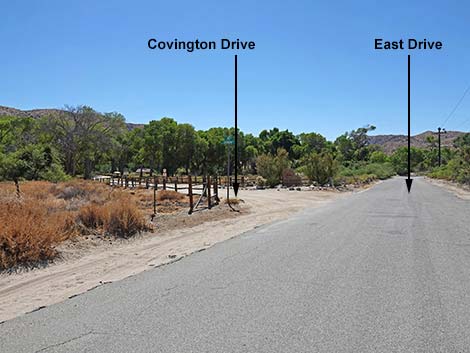 East Drive approaching Covington Drive (view S) |
 Street signs: East Drive and Covington Drive |
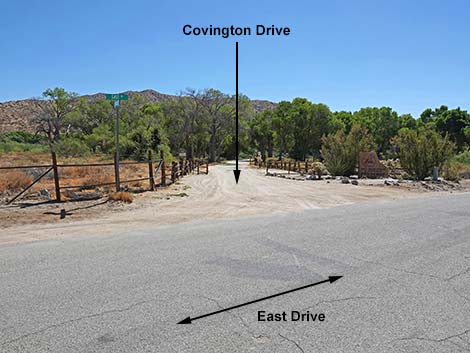 Covington Drive (view SE from East Drive) |
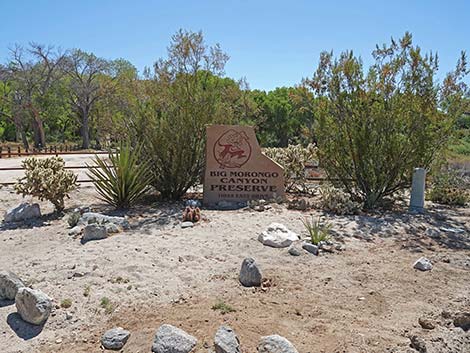 Big Morongo Preserve entrance sign (view SE) |
 Big Morongo Preserve entrance sign (view SE) |
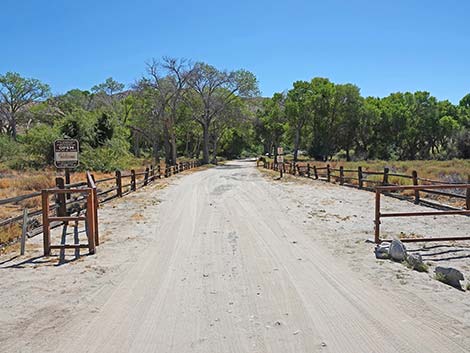 Big Morongo Preserve entrance gate on Covington Drive (view SE) Big Morongo Preserve entrance gate on Covington Drive (view SE) |
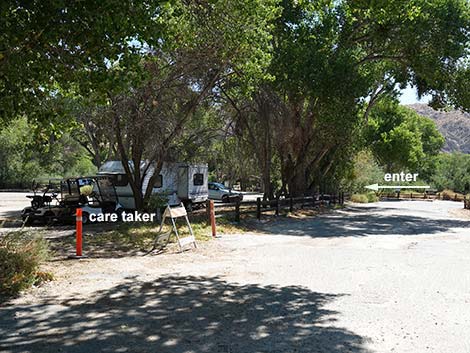 Covington Drive approaching the parking entrance (view SE) |
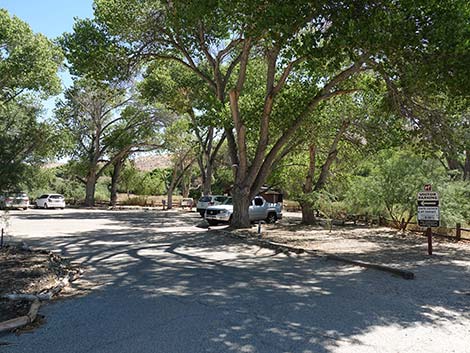 Covington Drive entering the parking area (view E) |
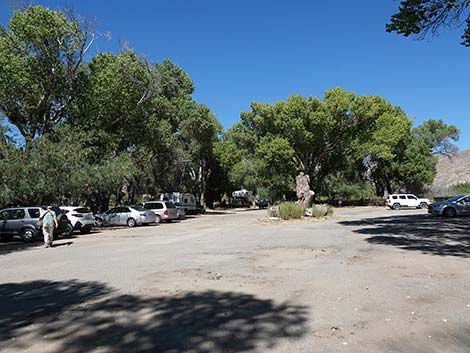 Big Morongo Preserve parking area (view NW) |
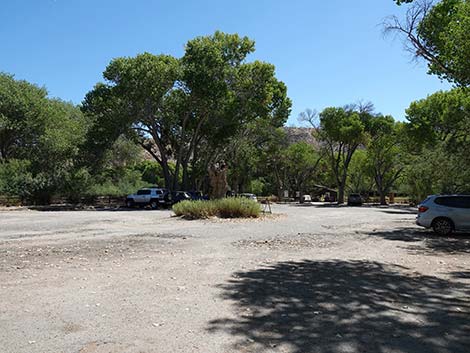 Big Morongo Preserve parking area (view SE) |
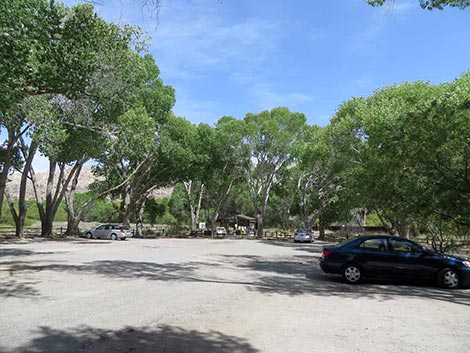 Big Morongo Preserve parking area (view SE) |
 Flush toilets across Covington Dr from the parking area (view SW) |
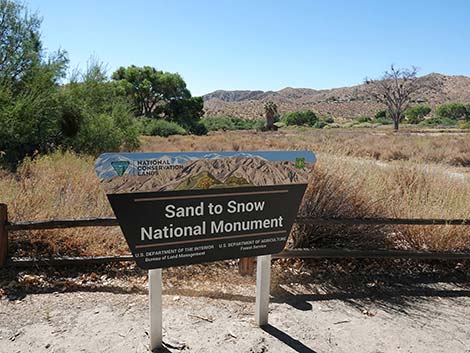 Sign at end of Covington Dr: Sand to Snow National Monument |
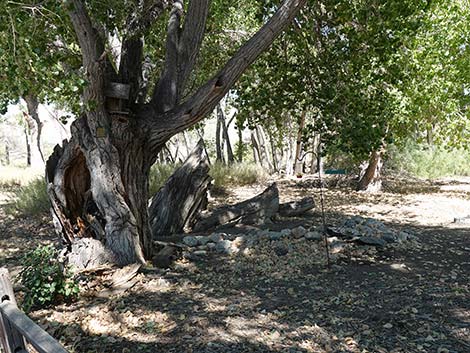 Bird feeders and water near the Care Taker's campsite (view N) |
Entrance and Information Kiosk
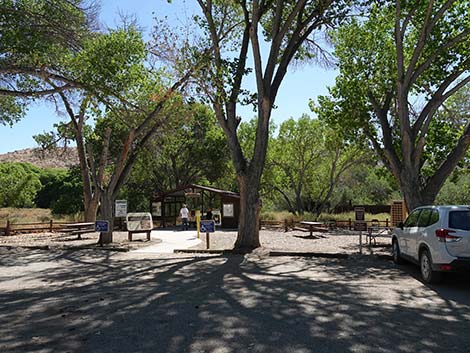 Entrance and Information Kiosk (view S from parking lot) |
 Information Kiosk area (view S) |
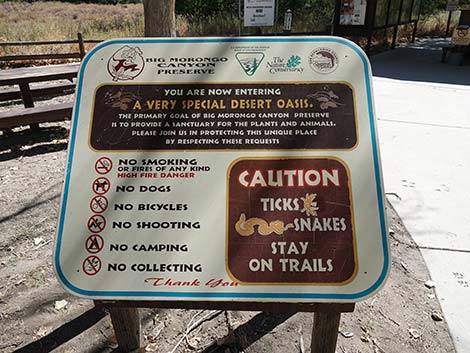 Sign: Entering a very special desert oasis (view W) |
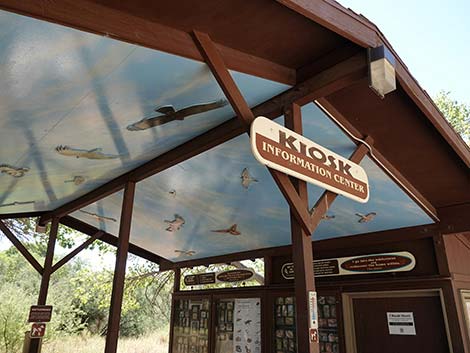 Information Kiosk ceiling with bird silhouettes (view SW) |
 Information Kiosk ceiling with bird silhouettes |
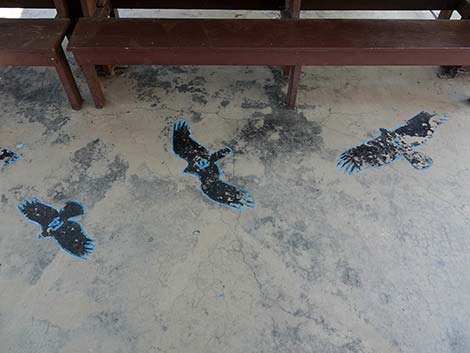 Information Kiosk floor with bird silhouettes too |
 Map of the trail system |
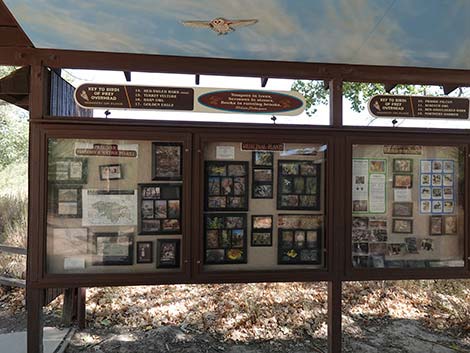 Information panels covering several topics |
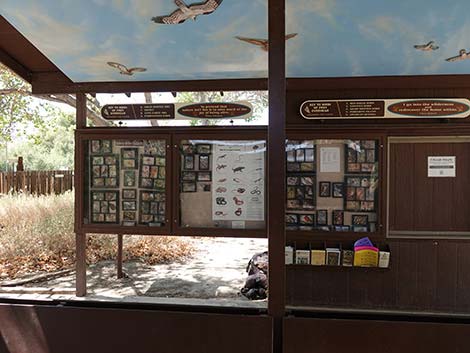 Information panels covering several topics |
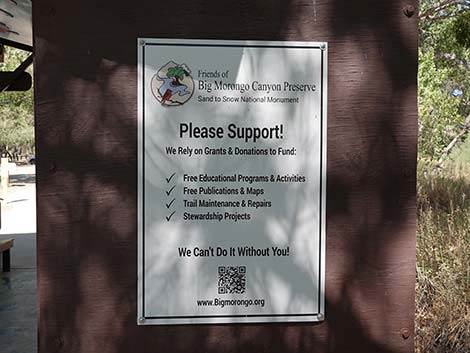 If you can, please support Big Morongo |
Trails
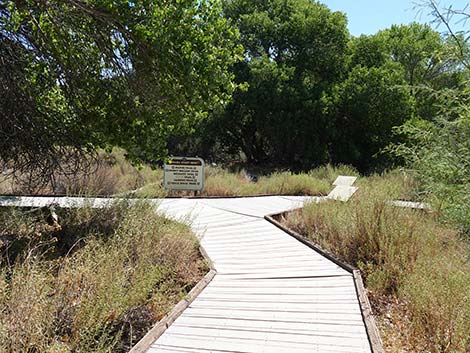 Boardwalk trail exits the information kiosk (view S) |
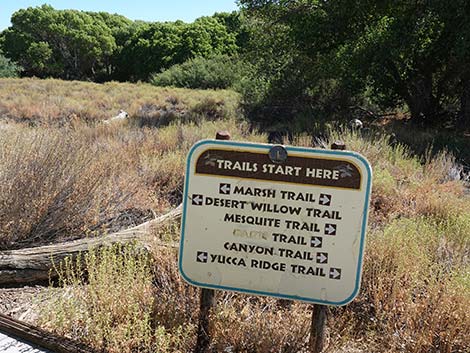 Directional signs are pretty good |
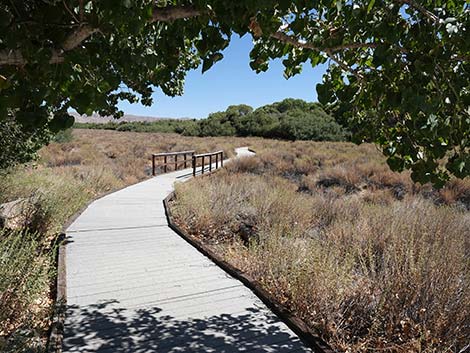 Marsh Trail departs to the left (view NE) |
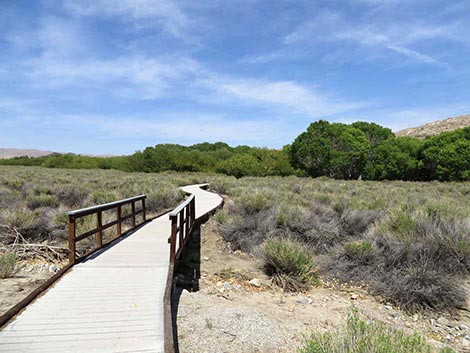 Marsh Trail departs to the left (view NE) |
 Covington Road continues as a walkway (view S |
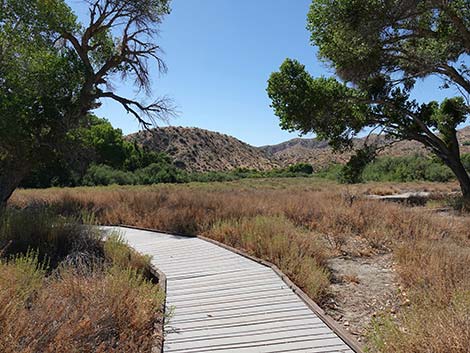 Boardwalk trail (view S across meadows to canyon) |
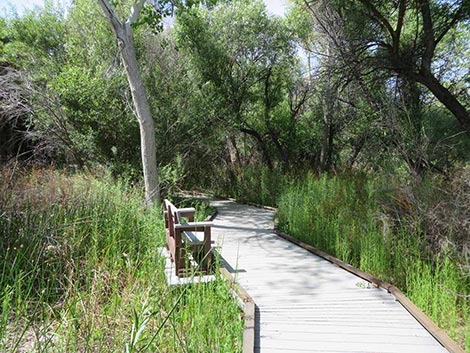 |
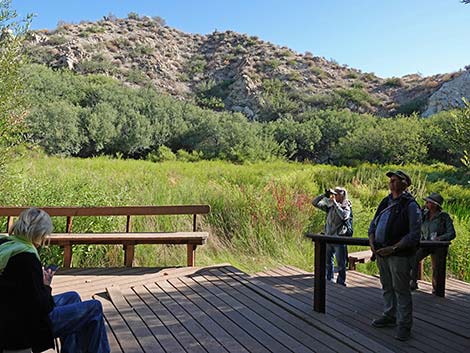 |
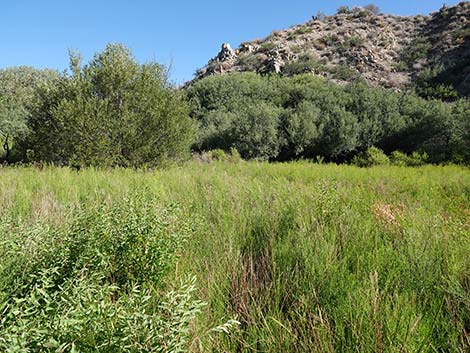 |
 |
 |
 |
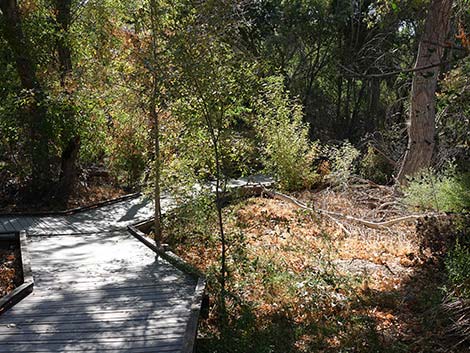 |
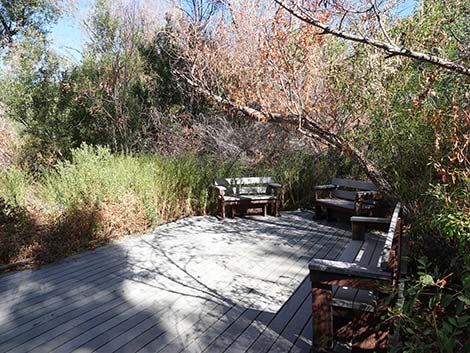 |
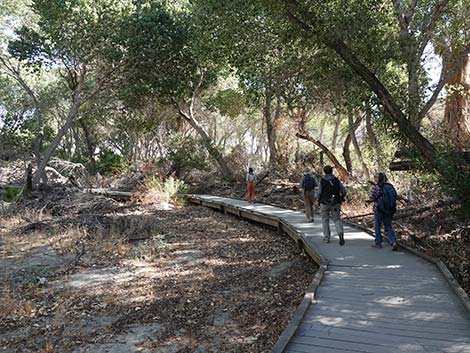 |
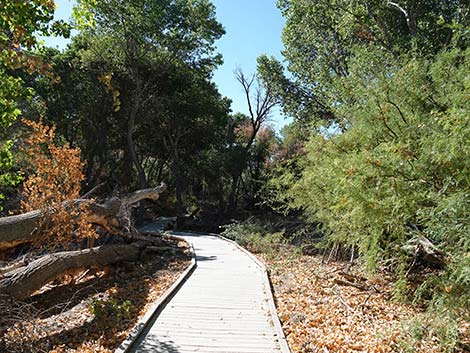 |
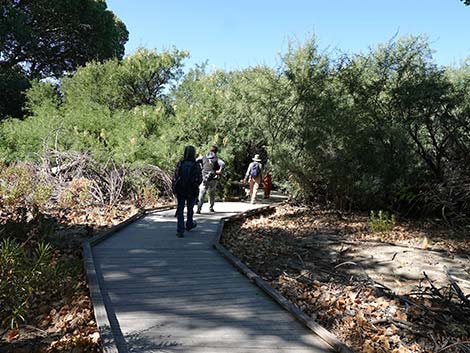 |
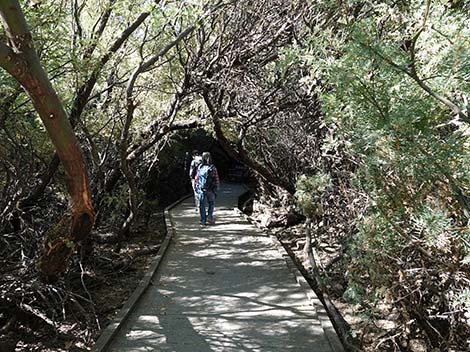 |
 |
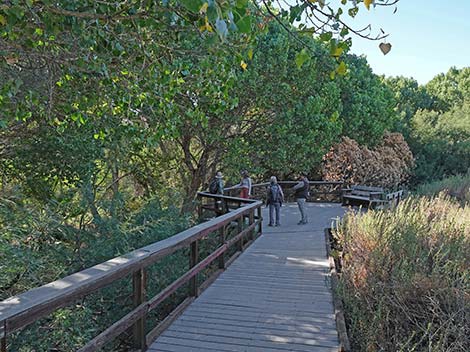 |
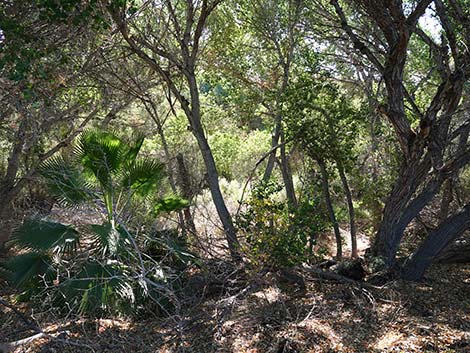 |
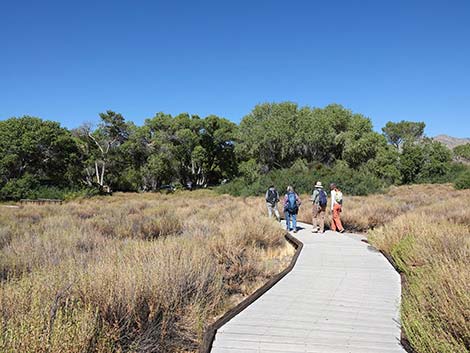 |
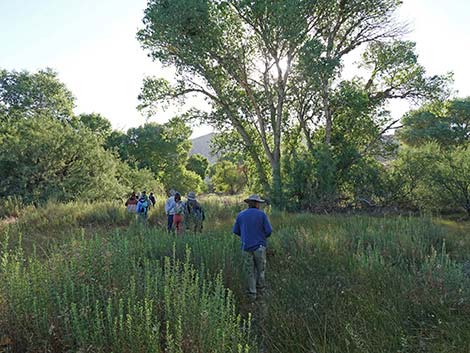 |
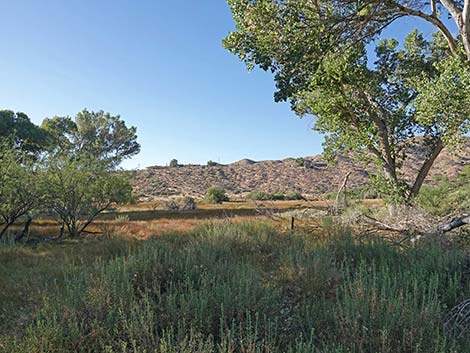 |
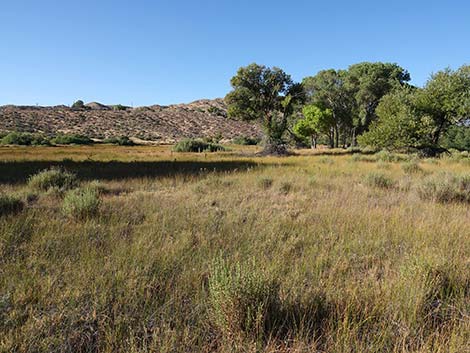 |
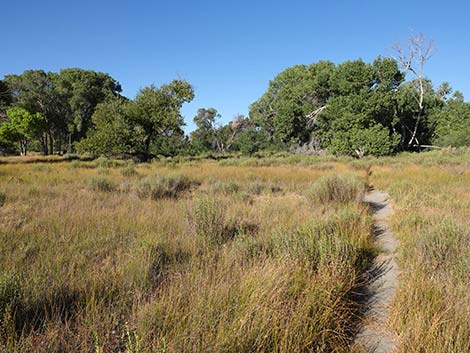 |
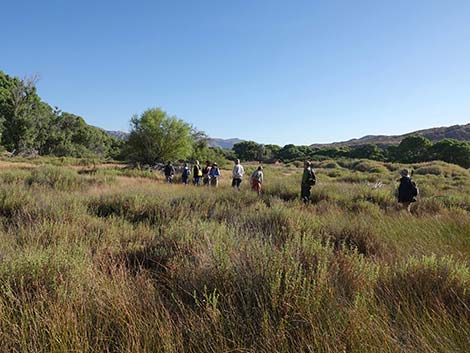 |
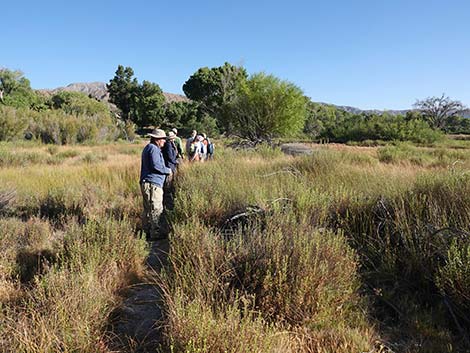 |
Nature Center
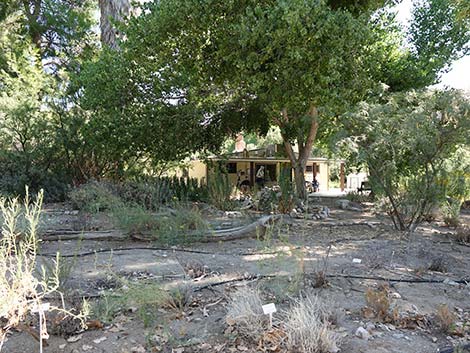 Nature Center (view NE from old Covington Road) |
 Birders watching feeders at the Nature Center (view N) |
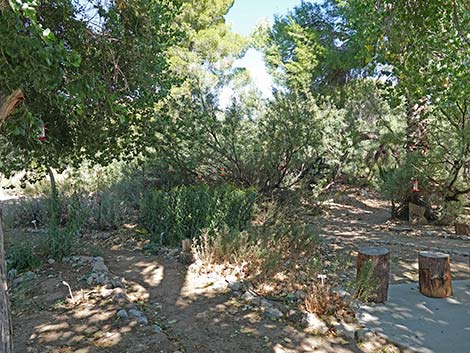 Bird feeders handing in the trees (view N) |
 Several hummingbird feeders (view N) |
 Water feature |
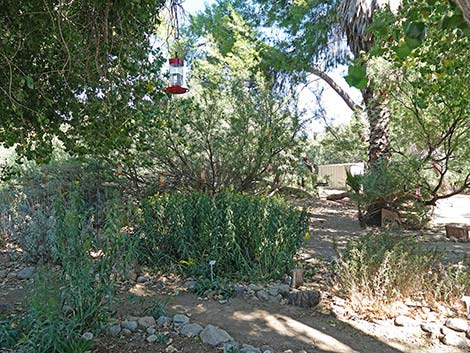 hummingbird feeders (view N) |
Covington Park
 Street signs: Park Ave and Vale Dr |
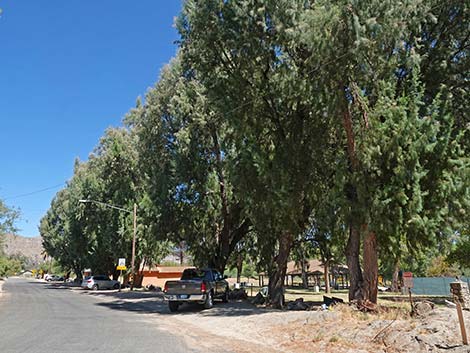 Covington Park parking (view N from Park Ave and Vale Dr) |
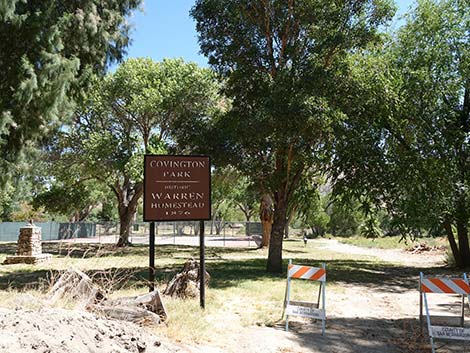 Sign: Covington Park (view E from Park Ave and Vale Dr) |
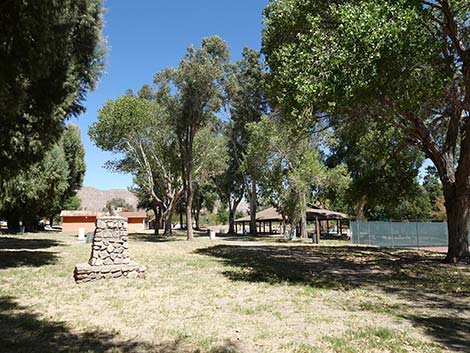 Covington Park |
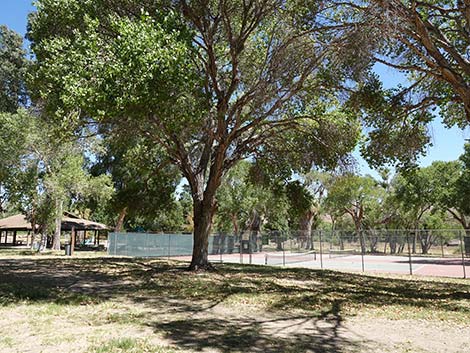 Covington Park recreational features (view NE) |
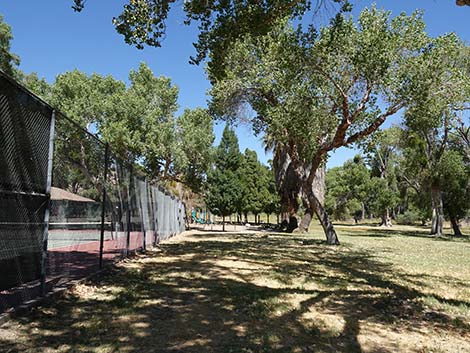 Covington Park recreational features, lawns, and trees (view N) |
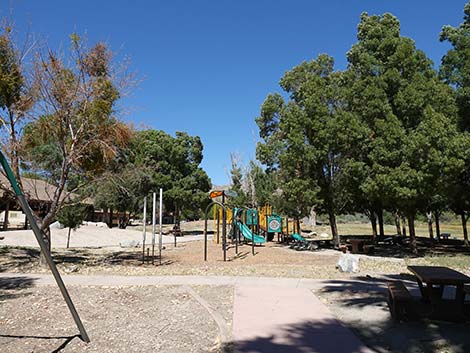 Covington Park recreational features (view N) |
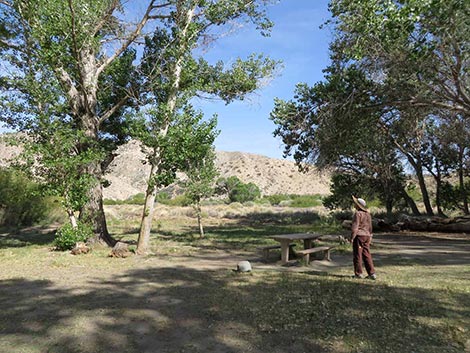 Covington Park lawn and tree (view E) Covington Park lawn and tree (view E) |
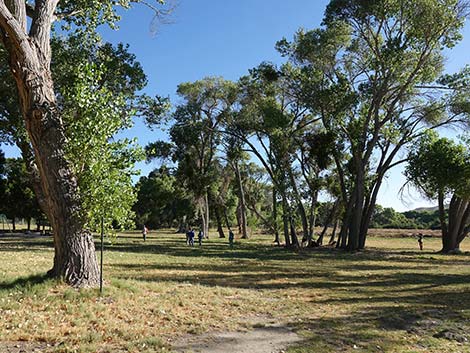 Birders working the trees (view N) |
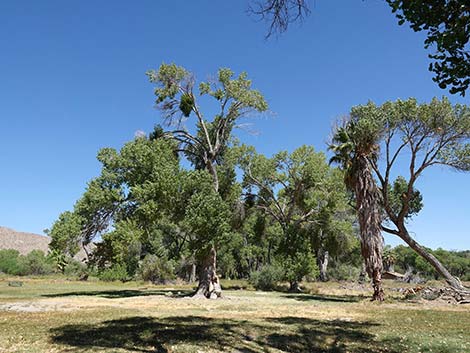 Covington Park lawn and tree (view N) |
 Big Morongo rest rooms (view NE from Covington Park) |
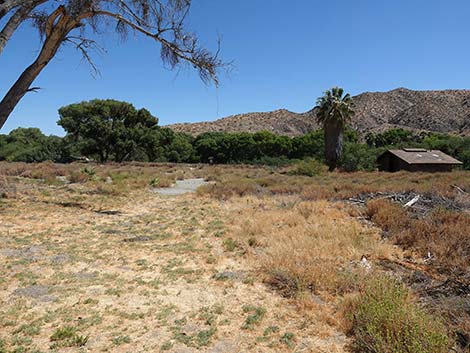 Historical road and old rest rooms (view E from Covington Park) |
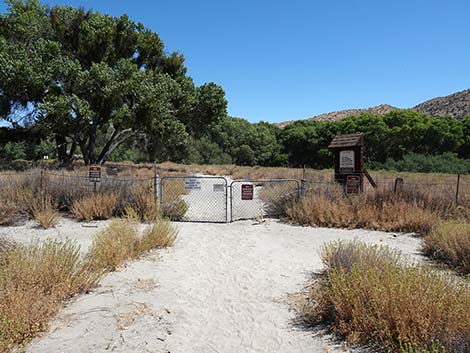 Gate on historical road provides access to Big Morongo (view E) |
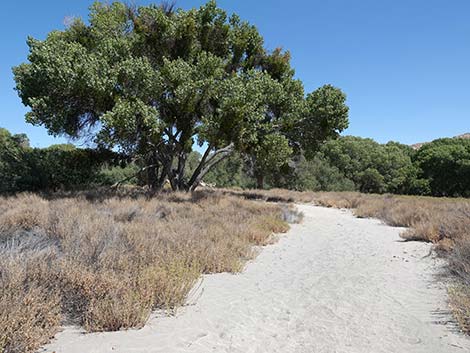 Dirt trail leads into Big Morongo (view NE) |
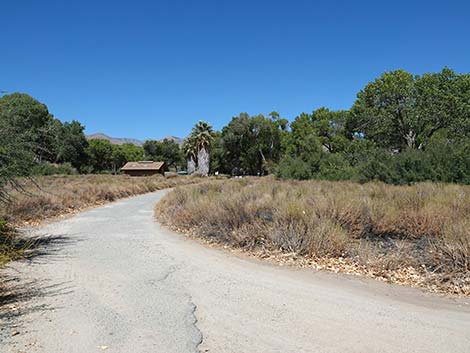 Past gate, old Covington Road (view NE toward modern restrooms) |
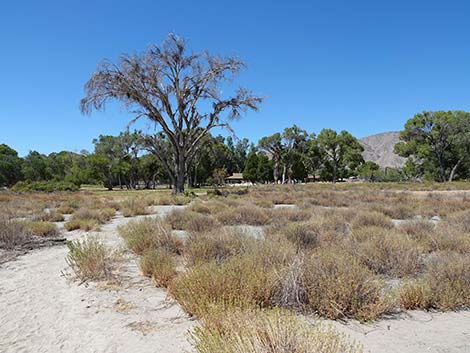 Returning to Covington Park (view W |
Jack Bath House (located at Park Ave and Mountain View Dr). Jack Bath, a long-time supporter of the preserve, donated his property to the organization when he passed. The house has been removed, and in its place, a bird sanctuary has been created with water, food, and cover for the birds, plus nice seating for visitors. Park on the nearby road edges.
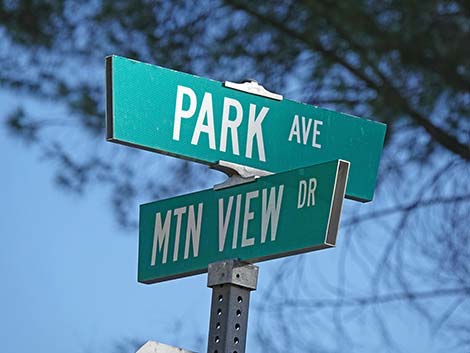 Street signs: Park Ave and Mountain View Dr |
 Mountain View Dr (view N from Park Ave) |
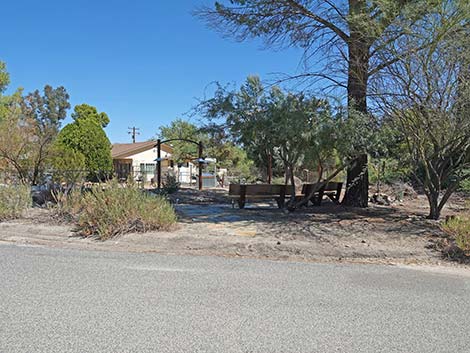 Jack Bath House bird sanctuary (view NW from Mountain View Dr) |
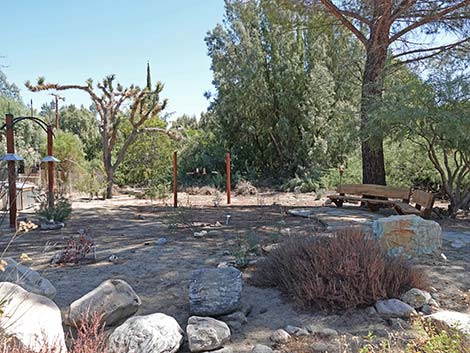 Jack Bath House bird sanctuary (view NW) |
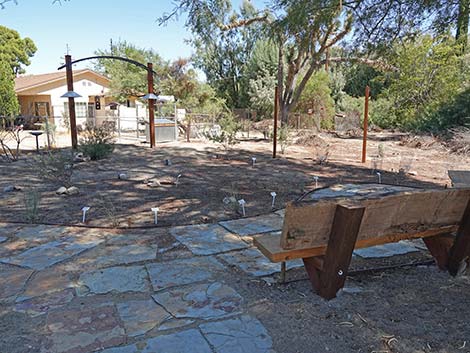 Bench on stone patio in the shade of a pine tree (view N) |
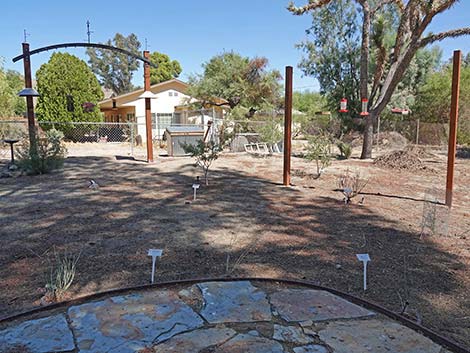 Seed and nectar feeders (view N) |
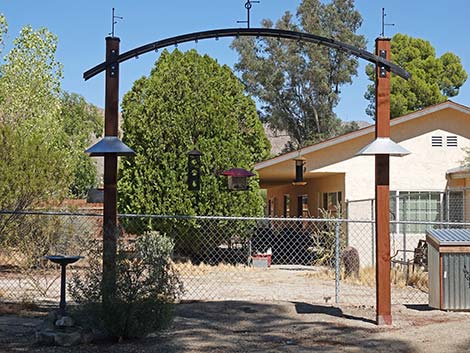 Seed feeders (view N) |
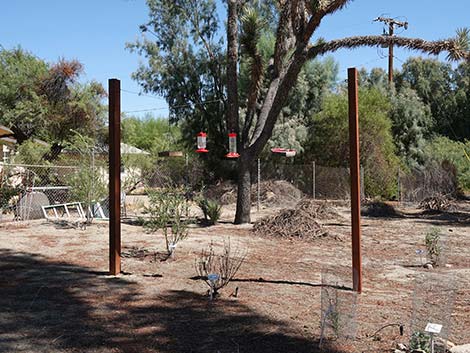 Nectar feeders (view NE) |
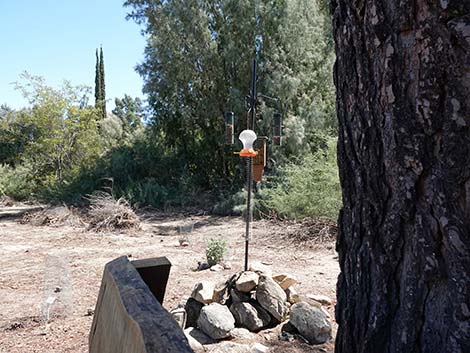 More feeders (view E) |
 House Finches on seed feeder (view N) |
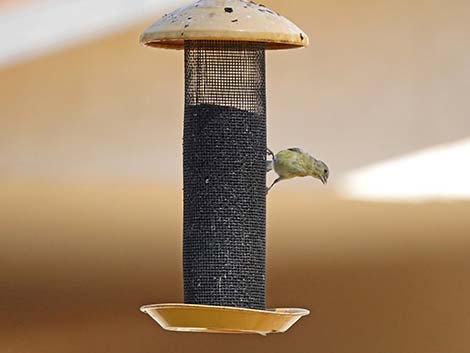 Lesser Gold Finch on thistle feeder (view N) |
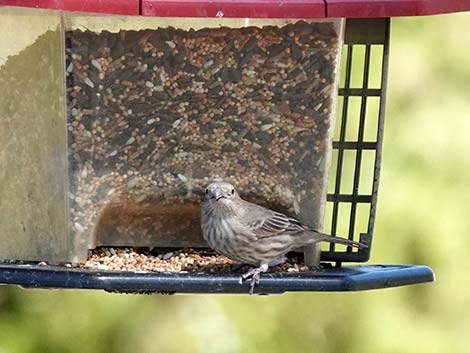 Lady House Finch on seed feeder (view N) |
Happy birding! All distances, elevations, and other facts are approximate.
![]() ; Last updated 241129
; Last updated 241129
| Birding Around Las Vegas | Glossary | Copyright, Conditions, Disclaimer | Home |